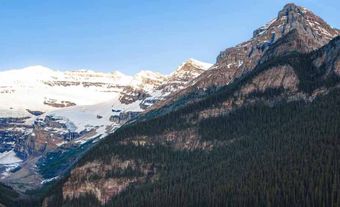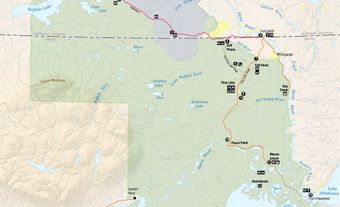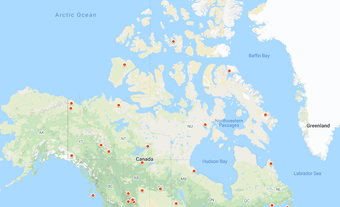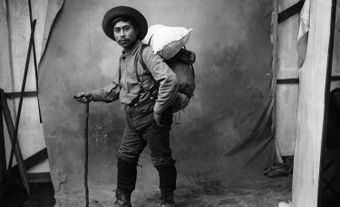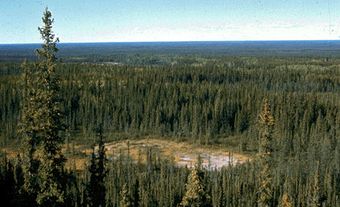Natural Heritage
Surrounding Mount Logan’s jagged 5,959 m summit and dominating the park is the world’s largest concentration of ice fields and glaciers. Fringing the glaciers and barren rocky mountain peaks is a narrow “green belt” of alpine tundra and lush valleys of coniferous and deciduous forests, providing critical habitat for the park’s abundant wildlife.
The park is well known for its wildlife, including ground squirrels, caribou, moose, grizzly and black bears, Dall sheep and mountain goats. Some 150 bird species, from golden eagles to golden-crowned sparrows, inhabit the park.
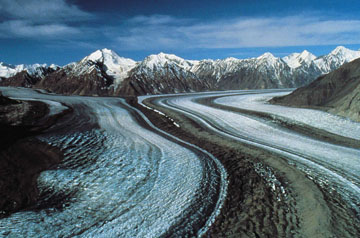
Human History
The Kluane National Park and Reserve area has been home to Southern Tutchone-speaking First Nations since the last Ice Age. Today, the area is known as the traditional territory of three First Nations: Champagne and Aishihik, Kluane, and White River. Explorers, prospectors, climbers and hunters settled around Kluane beginning in the 1890s. The completion of the Alaska Highway, which runs along its eastern boundary, opened up the area and led to the development of the Kluane Game Sanctuary in 1943.
In 1976, the federal government established the Kluane National Park Reserve. A national park reserve is an area designated to become a national park, but whose final boundaries and other terms will only be finalized upon the resolution of an unresolved land claim. In 1993, the federal government settled one of these land claims, with the Champagne and Aishihik First Nations (see Self-Governing First Nations in Yukon). This agreement established approximately 5,900 km2 of the southeastern portion of the park reserve as Kluane National Park.In 2003, the federal government signed a second land claim agreement with Kluane First Nation. These two agreements outline the First Nations’ right to hunt, fish and gather plants within the park and reserve, as well as their cooperative management of the area with Parks Canada. The remainder of the area’s reserve status will be removed when White River First Nation and the federal government enter into a final agreement.
Facilities
There is camping at Kathleen Lake, hiking and climbing, or fishing (June-August). There are winter facilities for cross-country skiing, ice fishing and camping. The nearby towns of Haines Junction and Destruction Bay on the Alaska Highway provide essential services.

 Share on Facebook
Share on Facebook Share on X
Share on X Share by Email
Share by Email Share on Google Classroom
Share on Google Classroom

